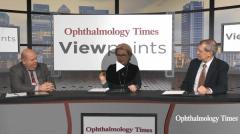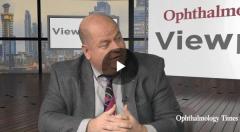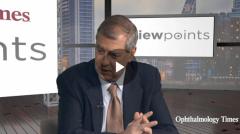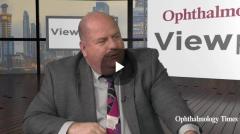
Dry Eye Disease Epidemiology
Episodes in this series

Eye care experts review the epidemiology of dry eye disease and why it is changing.
[Transcript]
Marguerite McDonald, MD, FACS: Let’s talk about dry eye. How common is dry eye? Who’s at risk?
Richard Mangan, OD, FAAO: Who’s at risk for dry eye? Well, I’ll tell you this. I moved to Colorado 3 years ago from Kentucky. I don’t think I have a single patient who’s come across my chair who doesn’t have some level of clinically significant dry eye. We certainly know there are risk factors, there are plenty of them.
Marguerite McDonald, MD, FACS: Depending on the study, you’re right, there’s one study that shows that half of Americans have clinically significant dry eye. Another study says there are 30 million in the United States but only 16 million have been diagnosed. So it’s ubiquitous.
Eric Donnenfeld, MD, FACS: Well, let’s get right to the chase. As an eye care professional, optometry, ophthalmology, it makes no difference. The single most common reason why patients come into our offices by Medicare designation is dry eye. It’s by far the most common problem we see in our office. And I will add to that, it’s probably also the most difficult problem we treat.
Marguerite McDonald, MD, FACS: Right, and the face of dry eye used to be the perimenopausal female, but the face of dry eye is changing with the use of digital devices, and the normal blink rate of 20 times a minute drops to 3 times a minute. One of our offices is the Manhasset office in New York, which is very close to one of the [military] academies, and the cadet academies’ students are on digital devices all day long, and they come streaming into that office. The Merchant Marine Academy is sending 18- to 22-year-olds every single week, and their problem is dry eye because of digital devices.
Eric Donnenfeld, MD, FACS: If you want to do something really interesting, and this may define a little bit of my personality, what I consider interesting, is go to a Starbucks and watch a millennial look at a screen. They’ll go minutes, literally minutes without blinking. It’s actually extraordinary, and we’re inducing an entire generation of dry eye patients because they’re not blinking, and they're not getting the normal effects of lipid flow, aqueous turnover. Dry eye used to be the 60-, 70-year-old woman, now it’s 15- and 25-year-olds.
Marguerite McDonald, MD, FACS: Yes, and the American Academy of Optometry and the American Academy of Ophthalmology have recommended the 20-20-20 rule. Every 20 minutes, stand up for at least 20 seconds, and look at least 20 feet away. It’s good for your posture and your circulation to stand up. You relax the muscles of accommodation briefly as you look far away, and it of course allows your blink rate to recover. I tell people that all day long. That makes a difference. And of course, we know the impact of hormones and menopause, well documented. But for the reasons we just discussed, there are a whole lot of men, especially young men, who have it too, and we’re all living much longer and we’re on more medicines that help us live much longer, and they have an impact on dry eye.
Newsletter
Don’t miss out—get Ophthalmology Times updates on the latest clinical advancements and expert interviews, straight to your inbox.

























































.png)


